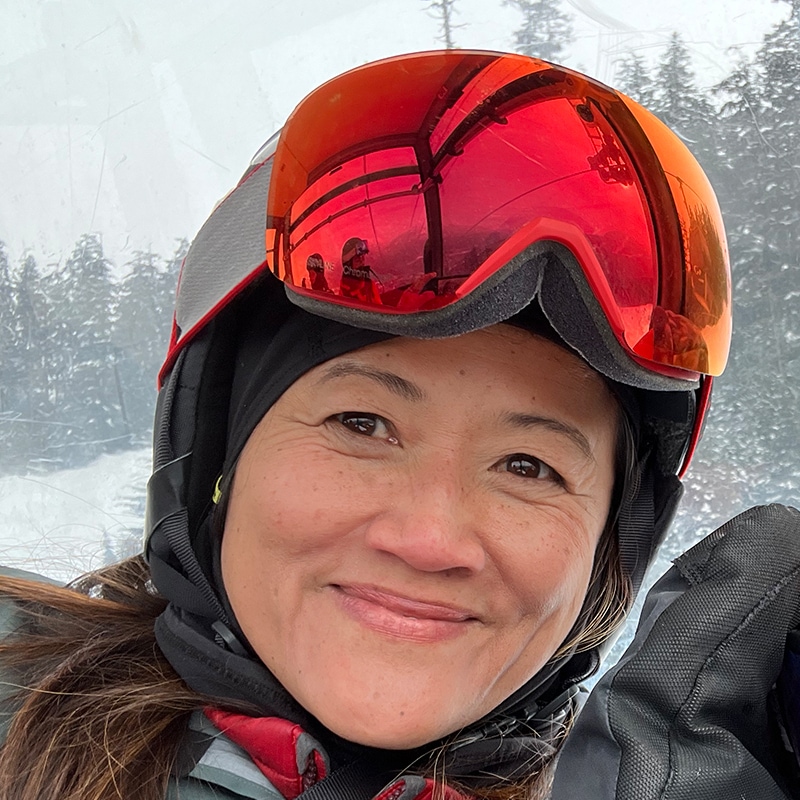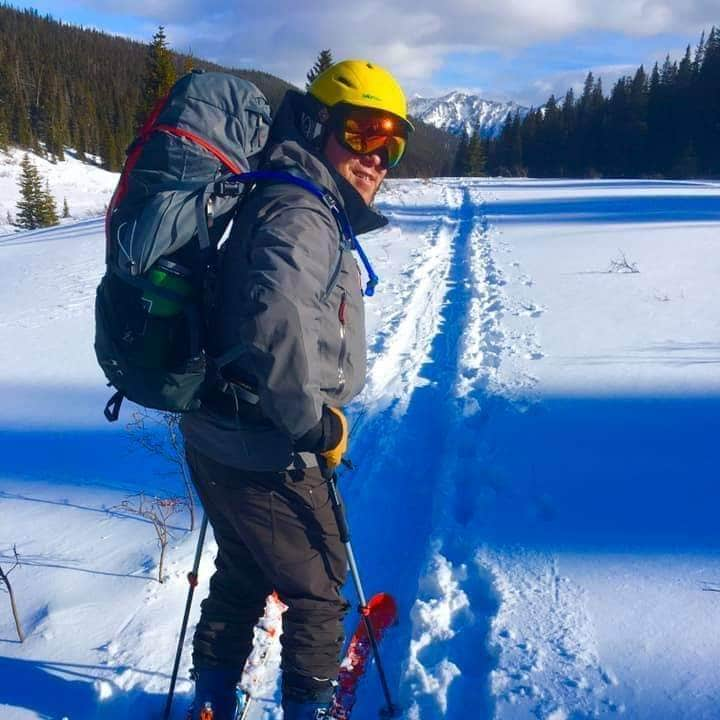Finding the best skis to take into the backcountry is a balancing act. You want a lightweight setup for efficient uphill travel. But you want to maintain the driving performance of downhill skis once it's time to rip off those climbing skins and enjoy your hard-earned turns.
Technically, you can use most any ski for backcountry touring as long as you have boots and bindings that allow you to lift your heels to walk ("skin") uphill (with the help of climbing skins) and then to lock them back into the bindings for the descent.
When buying your backcountry (also called alpine touring, or "AT") setup, think of your complete system: skis, bindings and boots. Finding skis may be the easiest of the three because there are so many options available depending on where and how you ski and personal style and preferences.
Here are some decision points when choosing backcountry skis:
- Consider the type of skiing you do: If you plan to do as much uphill touring as downhill skiing, consider skis that are lighter for more efficient skinning. If you're planning mostly resort skiing with some backcountry, you may want beefier skis for downhill performance.
- Consider the terrain you ski: Are you more likely to ski hardpack snow or the light, fluffy stuff? Do you want a ski for variable conditions? The terrain you ski will inform the width, shape and weight of the planks you choose.
- Factor in how you ski: What type of skier are you? Are you aggressive or more laid-back and relaxed? Also consider your weight, style and ability.
- Make sure your overall setup is compatible: Make sure your boots, bindings and skis will work together. An REI sales associate at a store near you can help you figure out what you need. (Read more about How to Choose Backcountry Ski Bindings and How to Choose Backcountry Ski Boots.)
What Type of Skiing Will You Do?
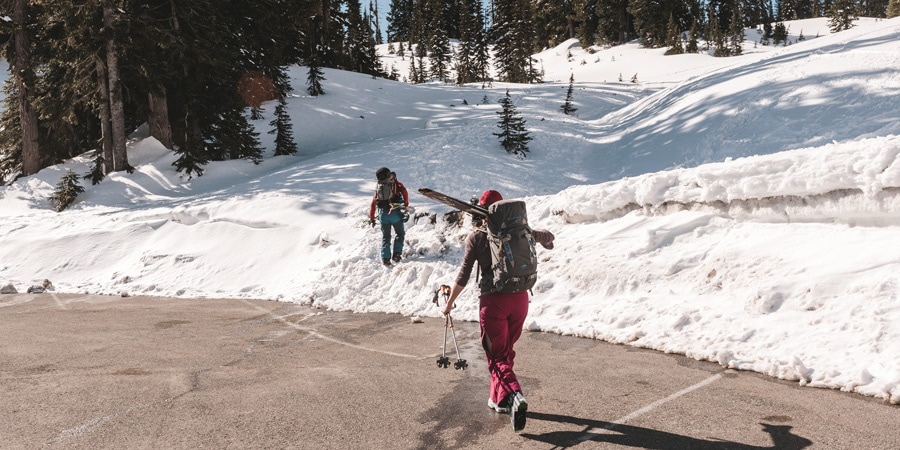
There's a wide variety of skis available to match your use. There are many exceptions based on personal preferences and the terrain you ski (which we cover below), but here is a very rough guide:
Skis for Mostly Alpine Touring
If you plan to spend as much time skinning as ripping turns, choose skis that are lighter and nimbler for efficient uphill climbing. If descents or catching big air is your primary focus, however, you may not want to compromise on downhill power or stability; choose wider skis with more heft. Balance the trade-off that works for you.
Skis for Both Backcountry and Resort Use
If you're looking for one setup to use both out of bounds and in bounds, figure out how much time you'll spend in each. If most of your time will be spent cruising inbounds with occasional forays into lift-accessed backcountry terrain known as side or slack country, you may want beefier skis that perform better downhill because weight may not be as big an issue for you.
Skis for Racing or Ski Mountaineering
If skiing fast and light over long distances or bagging a peak is your goal, you'll want the lightest system possible. It's all about speed and efficient travel, so look for lightweight and narrow skis.
What Terrain Do You Ski?
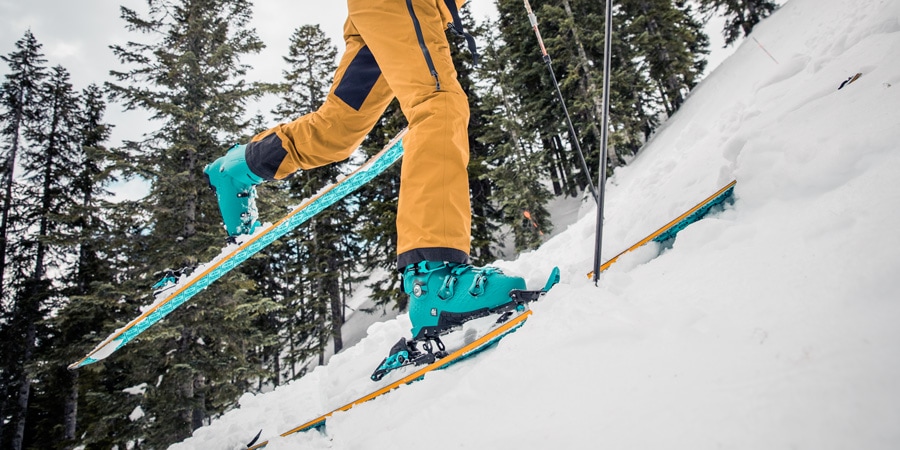
Below are pros and cons of different ski waist widths. Keep in mind that there are regional differences in snowpack (for example, typically wetter, denser snow in the Pacific Northwest vs. drier, lighter snow in the Rockies) and other factors that will shape individual decisions as well.
Narrower skis (typically 95 mm or less at the waist):
- Better for longer tours and more efficient uphill travel
- Lighter weight and typically quicker in trees, bumps and hardpack snow
- Faster transitions from edge to edge
- Perform well on firm hard snow or glaciers
- Good for spring touring/skiing when snow is typically consolidated (firmer)
- Disadvantage is they may not float as well in deeper snow
Wider skis (typically 95-105 mm at the waist):
- Most people will find all-around, versatile skis in this middle ground
- Wider width underfoot makes trail breaking easier
- Help you stay afloat in soft snow and variable conditions
Widest skis (typically 105 mm or wider at the waist):
- Bigger surface area underfoot means better flotation, easier trail breaking
- Wider platforms are designed to keep you atop deep snow for a surf-like feel
- Disadvantage is the heavier weight and may be less maneuverable for touring
How Do You Ski?
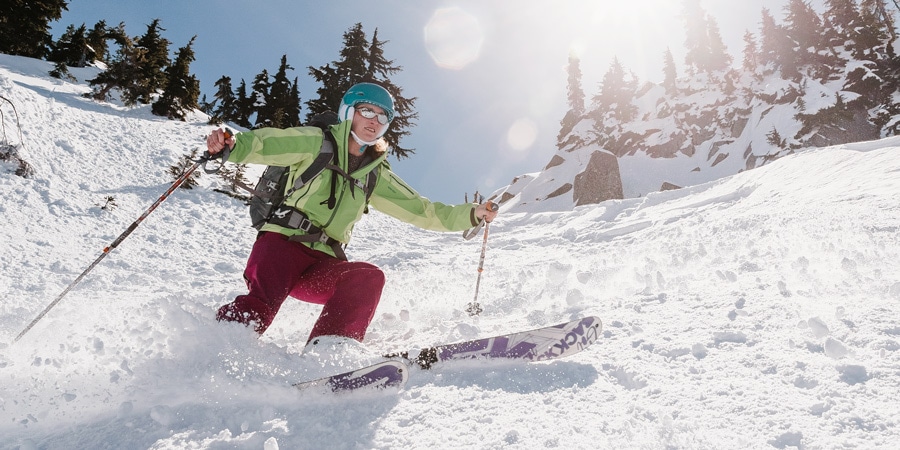
A number of factors will determine how a ski will perform, including ski shape, length and profile.
Ski Length
When choosing a ski length, your height is one of many factors in the equation, but not as important as how you ski, the terrain, your weight and your ability. In general, more aggressive skiers who want to go faster may want longer, heavier skis that hold up better to chatter and handle higher speeds. A person who weighs more or wants to stay on top of the snow may also want longer skis. If you're a more laid-back skier, want more maneuverability in trees or ski weight is a concern, then you may want shorter skis. It's helpful to go into a store and compare skis. A sales associate at the nearest REI store can help you dial in the right size.
Ski Profile: Rocker vs. Camber
When choosing the length of your skis, you should also take into consideration the ski profile, which affects how the skis come in contact with snow. You'll often hear the terms camber or rocker to describe ski profile. If you place your skis on a flat surface and look at it from the side, notice where it bends upward or where it remains flat to the ground.

A traditional cambered ski features a continuous bow that runs for much of the length of the ski with the middle rising off the ground. If you're on the ski, it flattens under your weight and the entire length of the base contacts the snow, providing more stability to initiate and carve turns.

A rockered ski is the opposite of camber (sometimes called negative camber). On a flat surface, the midsection of a rockered ski will rest on the ground while its tips and tails rise off much earlier than with a cambered ski. Rocker offers improved flotation in powder and greater maneuverability.
Most backcountry skis will have a certain amount of camber underfoot with rocker in the tip or and/or tail. Camber generally gives you better edge control on hard snow, while rocker in the tip and/or tail will provide better flotation in deep powder because that part of your ski is not contacting the snow. The downside of too much rocker is the shorter effective edge, making the skis less stable in hard snow. Read more about Understanding Ski Rocker.

